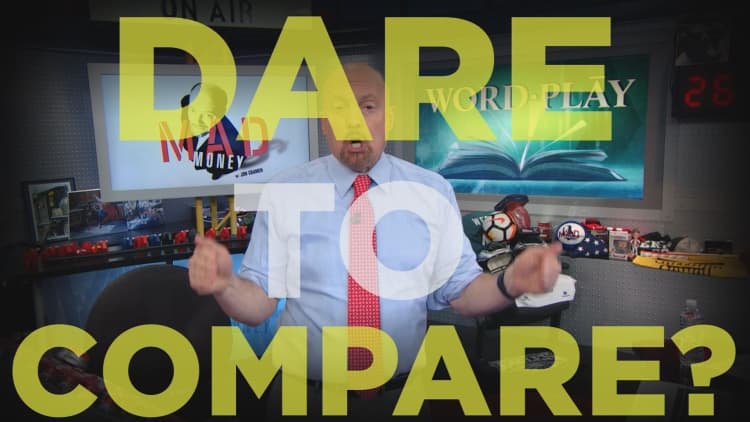
CNBC's Jim Cramer breaks down a menu of complex terms that are used in trading stocks. The "Mad Money" host explains how investors must consider the business cycle when finding the opportune time to buy or sell an equity. He explains to viewers how simple math can help determine when a stock is undervalued or overvalued.
Cyclical vs. secular stocks
Investing is a difficult endeavor.
Still, it's a manageable task once the curtain of "arcane terminology" and Wall Street "gibberish" is pulled away, according to CNBC's .
"Investing isn't easy, but it doesn't have to be mystifying or intimidating. You just need to learn the lingo," the "Mad Money" host said. "Know the difference between cyclical and secular growth stocks, recognize a sector rotation when you see one, and always, always, always stay diversified."
Wall Street vocabulary lesson
When investors evaluate stocks to purchase, there are more things to consider than just a security's sticker price.
"You need to know the vocabulary before you can evaluate a stock," Cramer said. "When you're comparing, look at the price-to-earnings multiple ... the growth rate, the top line, the bottom line and the gross margin when you're trying to figure out which stocks are worth owning and which stocks are worth" selling.
Measure potential risk against potential reward
One of the biggest errors an investor can make when buying a stock is to project how high its share price can rise without considering how low it can fall.
Pain from a big loss hurts much more than the pleasure from a big rally, which explains why investors must determine a security's risk-reward when managing a portfolio, Cramer said.
"Know what you own and know what others will pay for it," the host said. "That means you need to understand the risk-reward, the potential downside and potential upside, before you purchase anything, by figuring out where the growth investors put in the ceiling and where the value cohort creates the floor."
Questions for Cramer?
Call Cramer: 1-800-743-CNBC
Want to take a deep dive into Cramer's world? Hit him up!
Mad Money Twitter - Jim Cramer Twitter - Facebook - Instagram
Questions, comments, suggestions for the "Mad Money" website? madcap@cnbc.com



